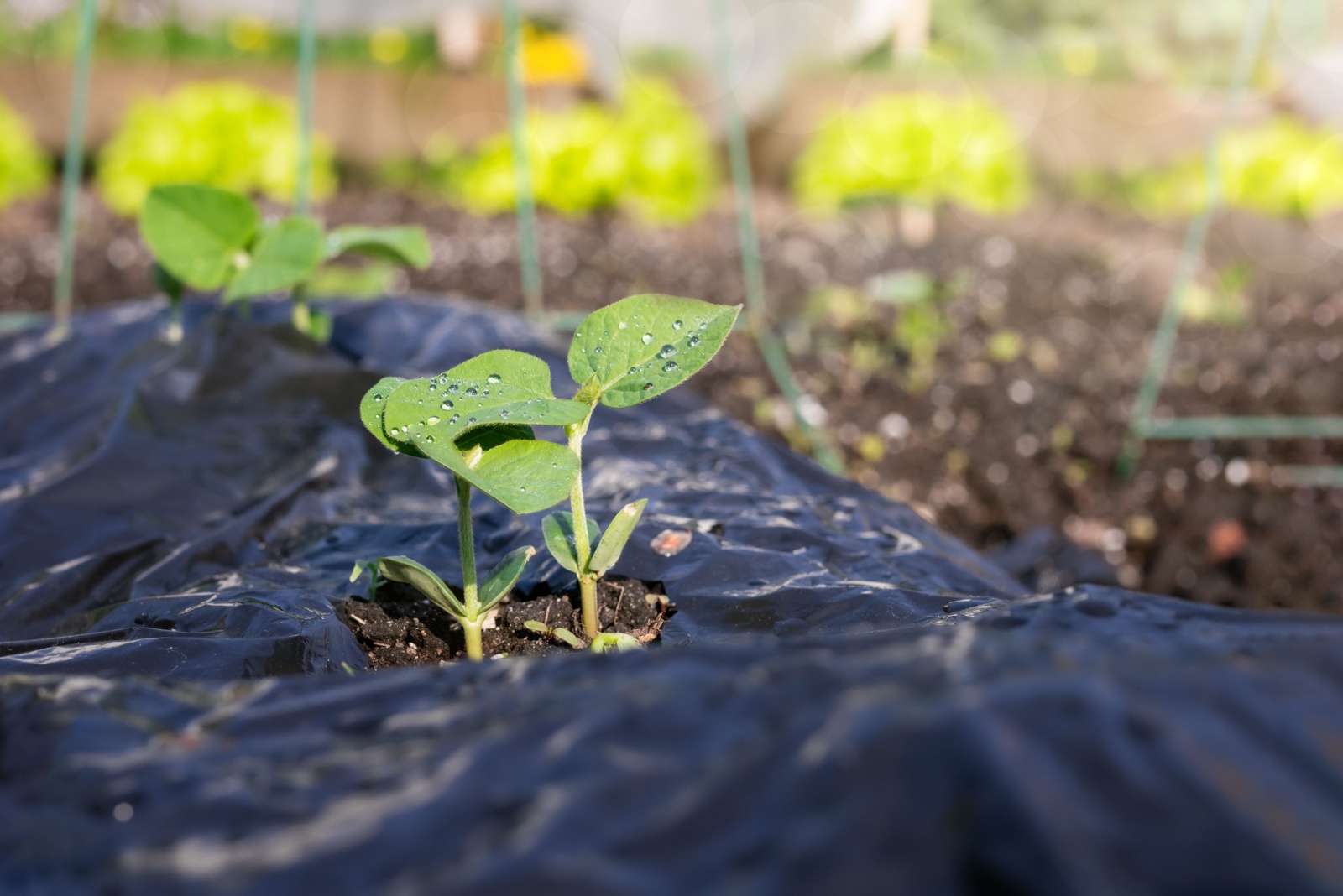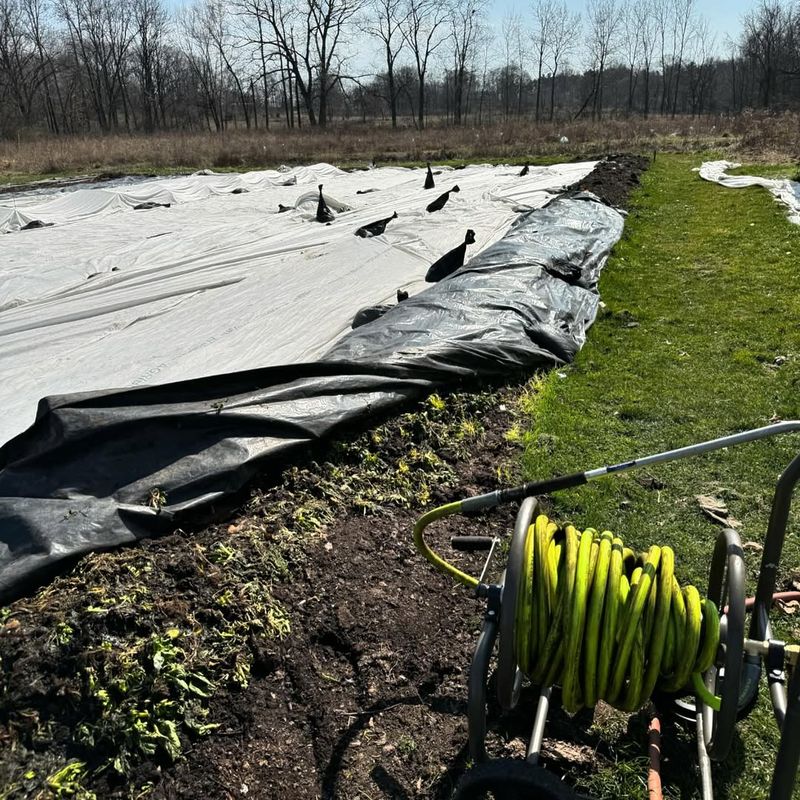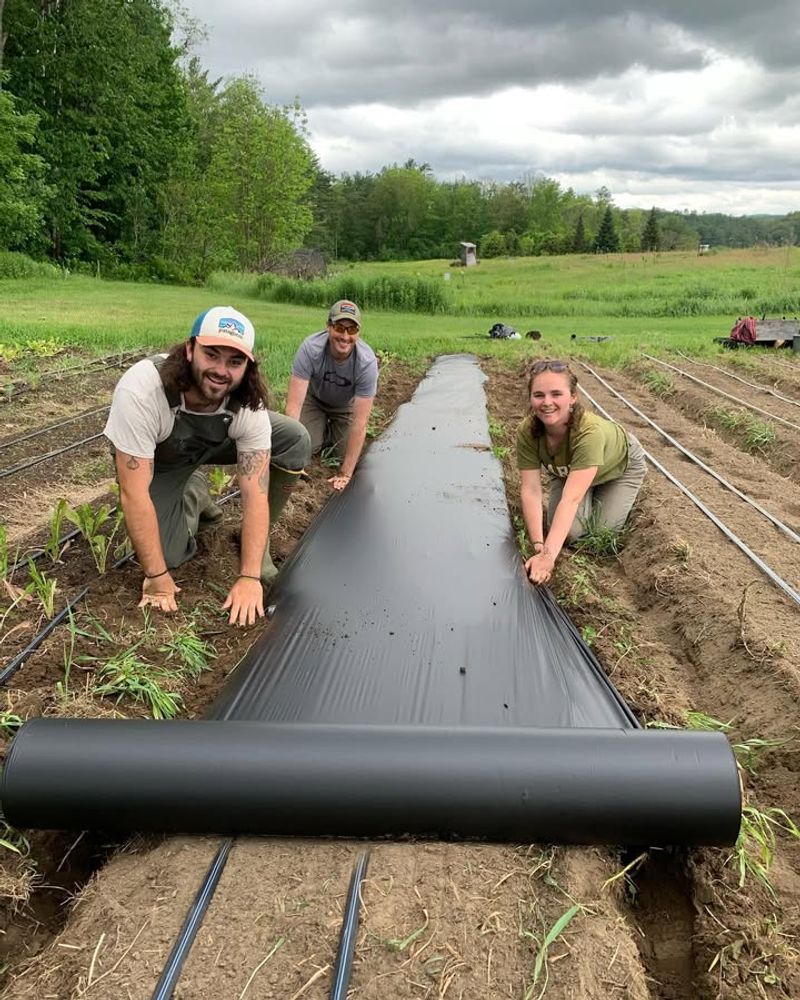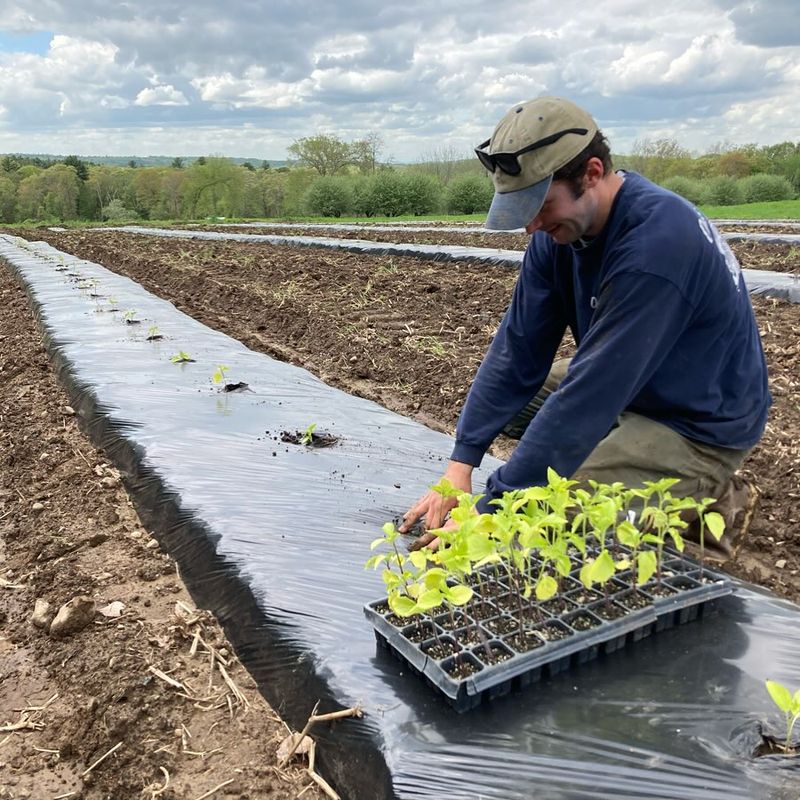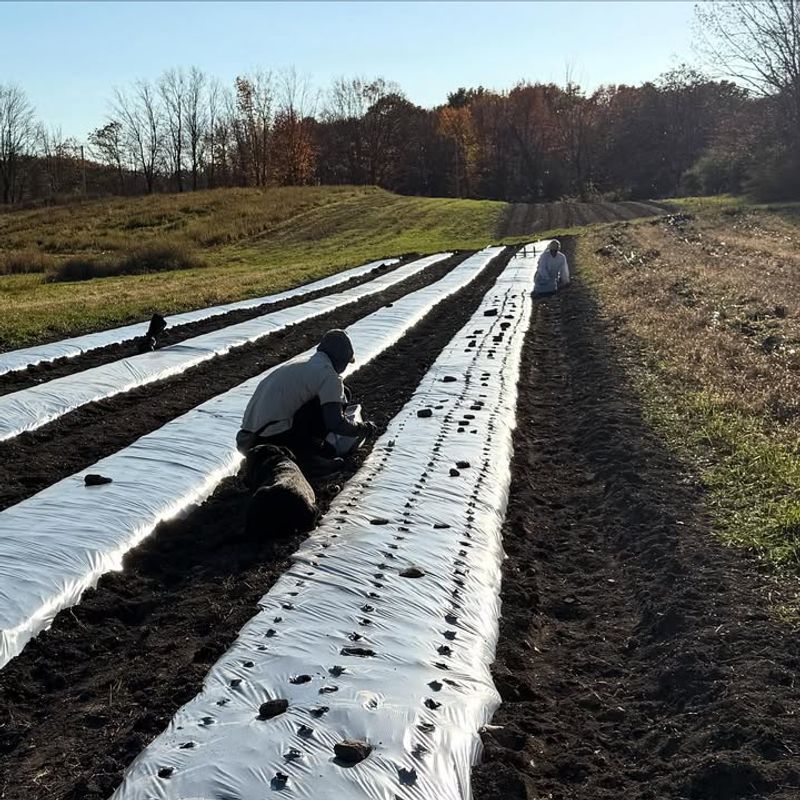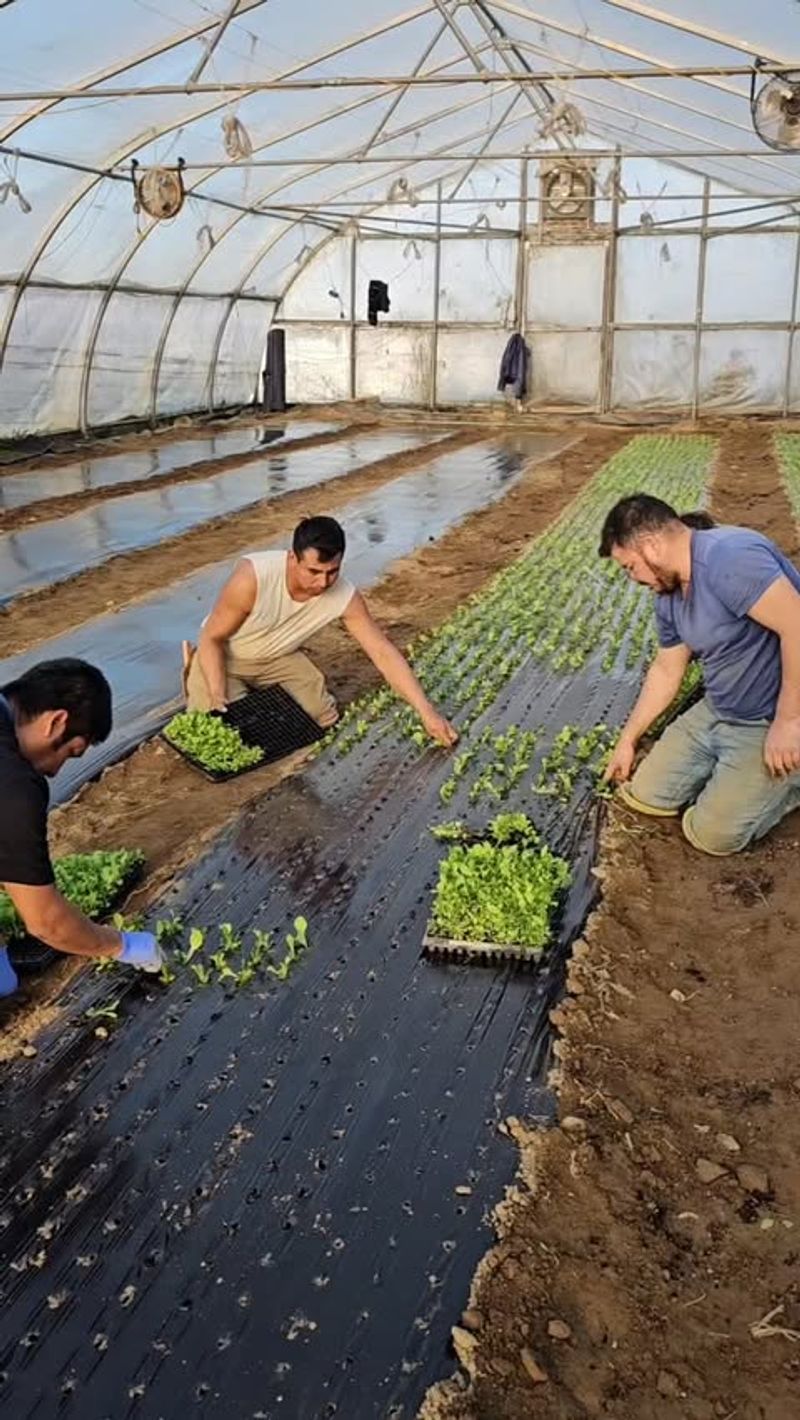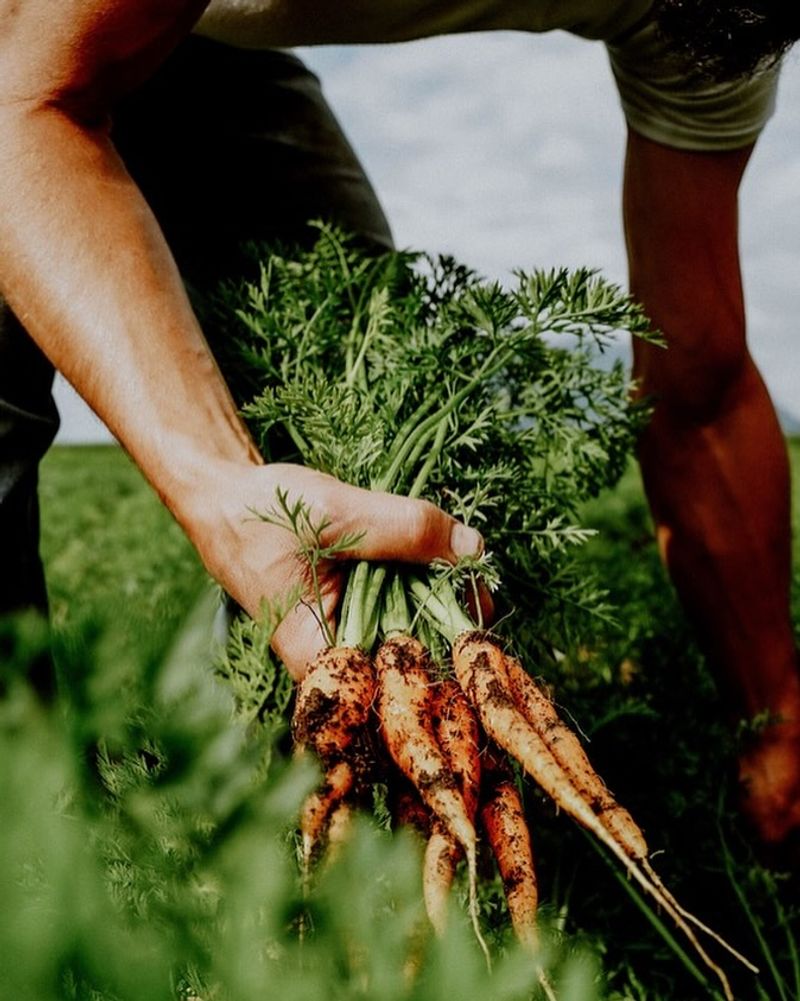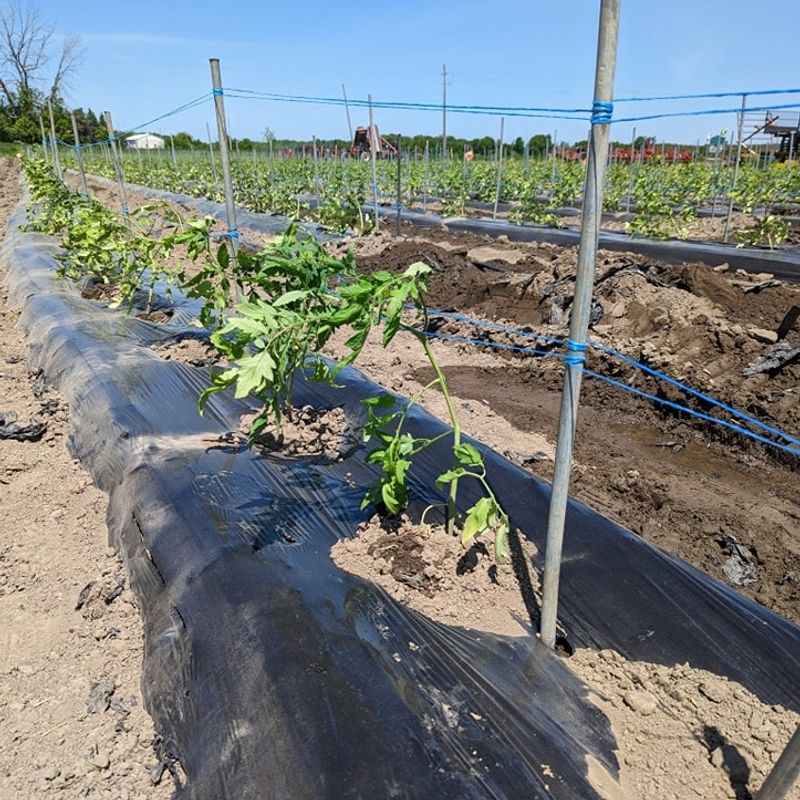Growing vegetables in December sounds impossible, especially in Colorado where winters can be brutal.
But clever gardeners have discovered a simple trick using black plastic that warms the soil enough to keep plants thriving even when snow covers the ground. This method has changed winter gardening completely, making fresh veggies possible all year long.
Black Plastic Absorbs Sunlight Like A Solar Panel
Dark surfaces naturally soak up heat from the sun, and black plastic sheeting works the same way. When you lay it over your garden beds, it captures solar energy throughout the day, even during short winter hours.
The trapped warmth transfers directly into the soil beneath, raising temperatures by several degrees.
Cold soil stays frozen and lifeless, but warmed earth allows roots to absorb water and nutrients properly, keeping your vegetables growing strong through December’s chill.
Temperature Boost Of 10-15 Degrees Fahrenheit
Scientists have measured the difference black plastic makes, and the results are impressive. Covered soil can reach temperatures 10 to 15 degrees warmer than exposed ground nearby.
That might not sound like much, but it’s the difference between frozen earth and workable soil. Plants need warmth to process nutrients through their roots.
With this temperature increase, vegetables continue their natural growth cycles instead of going dormant, giving Colorado gardeners fresh produce when neighbors’ gardens are buried under ice.
Installation Takes Just Minutes Per Bed
You don’t need special tools or complicated instructions to set up this system. Simply unroll black plastic sheeting across your prepared garden beds and secure the edges with rocks, bricks, or landscape staples.
Most gardeners finish covering a standard four-by-eight-foot bed in under ten minutes. The plastic should lie flat against the soil surface for maximum contact and heat transfer.
Once positioned correctly, it stays in place through wind and snow, working continuously without any additional effort from you throughout winter.
Cut Holes For Individual Plants To Grow Through
After securing the plastic, mark spots where you’ll plant your vegetables and cut X-shaped openings with scissors or a utility knife. Each opening should be just large enough for seedlings to fit through comfortably.
The plastic stays in place around each plant, continuing to warm the surrounding soil while the vegetable grows up through the hole.
This design protects roots below while allowing leaves and stems to reach sunlight above. Your plants get the best of both worlds—warm roots and access to fresh air.
Leafy Greens Thrive Under This System
Spinach, lettuce, kale, and Swiss chard are champions of cold-weather gardening with black plastic. These vegetables naturally tolerate cooler temperatures better than tomatoes or peppers.
Combined with the extra warmth from the plastic, they actually flourish in Colorado’s December conditions. Many gardeners report that winter-grown greens taste sweeter because cold stress causes plants to produce more sugars.
You’ll harvest crisp, flavorful salads while grocery store produce travels thousands of miles to reach shelves, losing freshness along the way.
Root Vegetables Stay Protected Underground
Carrots, radishes, and beets benefit tremendously because their edible parts develop completely beneath the warmed soil. The black plastic keeps the ground temperature stable, preventing the freeze-thaw cycles that damage root crops.
Without protection, roots can crack and become woody when soil repeatedly freezes. Under plastic, they continue growing slowly but steadily.
Some gardeners in Colorado actually prefer harvesting root vegetables in winter because the cold enhances their sweetness, making December carrots taste better than summer ones while staying perfectly crisp underground.
Weed Growth Stops Completely In Darkness
Weeds need sunlight to germinate and grow, just like your vegetables do. Black plastic blocks all light from reaching the soil surface, creating permanent darkness that prevents weed seeds from sprouting.
Even aggressive Colorado weeds can’t survive without photosynthesis. You’ll spend zero time pulling weeds during winter months, which is especially nice when frozen fingers make garden work miserable.
The only plants in your beds will be the ones you deliberately cut holes for, giving your vegetables all the nutrients and space without competition from unwanted invaders.

